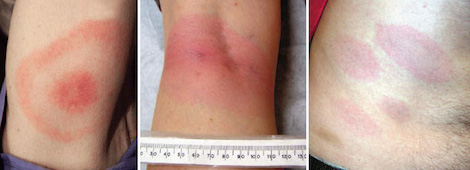 NEWS RELEASE
NEWS RELEASE
ALGOMA PUBLIC HEALTH
- avoiding walking in tall grass
- making sure yards are kept clear of debris and overgrown vegetation, grass, bushes, and trees
- keeping wood piles and bird feeders away from homes
“Ticks cannot fly, but they can get on you if you brush against vegetation,” said Dr. Sutcliffe. “If you go into wooded or grassy areas, it is recommended to wear a long-sleeved, light-coloured shirt, pants, and closed-toe shoes. Pants should be tucked into socks and insect repellant should be used on all exposed skin. Choose repellants approved by Health Canada and follow the application recommendations on the package,” added Dr. Sutcliffe.
After being outdoors, check yourself and those in your care for ticks.
Ask for someone’s help to check spots that you can’t see.
Changing clothes and taking a shower will help wash off ticks that have not yet attached themselves.
If a tick is found embedded in the skin, tweezers should be used to remove it as soon as possible.
Hold the tick gently with the tweezers, as close to its head as possible, and pull it out slowly.
It is then important to clean the area and apply a bandage if necessary.
The tick should be placed in a container and given it to a health care provider or local health unit.
It will be sent to a provincial laboratory for testing.
“Ticks are most likely to transmit infection after being attached for more than 24 hours of feeding,” says Sutcliffe. “Early symptoms of Lyme disease usually occur within one to two weeks but can occur as soon as three days to as long as one month after a tick bite. If you develop fever, headache, muscle and joint pains, fatigue and a skin rash, especially one that looks like a red bull’s eye you should seek medical advice,” she adds.
If symptoms of Lyme disease develop, antibiotics should prevent further complications.
The earlier treatment is received, the better.
If the initial infection is not treated, symptoms involving the heart, nervous system or joints can occur.
Ticks vary in size and colour. They can be hard to see until they engorge themselves with blood.
Adult females are three to five millimeters long before they feed, but young ticks are smaller and lighter in colour.
In Ontario, blacklegged ticks are found more commonly in rural areas along the north shores of Lake Erie, Lake Ontario, Lake Superior and the St. Lawrence River. In 2014 there were 145 confirmed cases of Lyme disease reported in Ontario.
For more information on Lyme disease and blacklegged ticks, visit www.algomapublichealth.com or call 705-942-4646, or toll free, 1-866-892-0172.
*************************